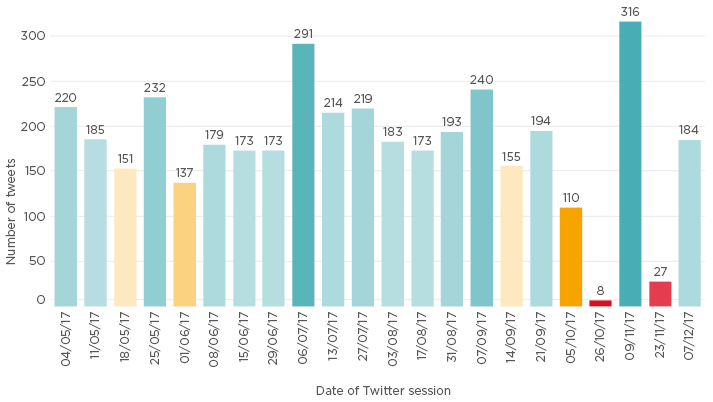INTRODUCTION
The use of social media as a means for dispersing knowledge has been gathering pace in recent times.1 This is especially true for Twitter, which has emerged as one of the foremost tools among social media platforms. The medical community has taken to Twitter in great numbers to connect with peers, debate, and spread knowledge and information on breaking news and trials in the medical field. It is interesting to note that, within this community, nephrologists have taken to Twitter like fish to water and have become a force to be reckoned with. Various learning tools have been developed on Twitter, including journal clubs, quiz sessions, blogs and essays, and slide and video presentations.2
MATERIAL AND METHODS
We developed a case discussion session on Twitter in the form of a tweet chat session entitled: ‘Everyday Cases in Nephrology’ and associated it with the hashtag #ECNeph. This form of discussion is unique and, to our knowledge, has not been attempted before on Twitter. This discussion was conducted for an hour every Thursday at a specified time and was attended online by nephrologists, nephropathologists, and radiologists from all over the world.
RESULTS
Twenty-two Twitter case conferences were conducted in the 8-month period from May–December 2017. A total of 3,957 tweets were composed during these case conferences. Specialists from 18 countries (including India, Canada, Mexico, China, UK, Myanmar, Malaysia, Spain, Turkey, Serbia, USA, Australia, and the Gulf countries) took part.
On average, 22 doctors joined the #ECNeph case discussion session with a total of 96 physicians interacting with the sessions during the 8-month period. The number of tweets per learning session varied from 110–316, with a mean of 180 tweets per session (Figure 1). The total percentage of tweets that included additional media in the form of slides of laboratory findings, radiological investigations, or renal biopsies was 10.45% (423 tweets). Following a mid-course change in the timings of the #ECNeph Twitter session from 8 pm Indian Standard Time to 10 pm, the number of participants increased from 16 to 22 on average.

Figure 1: The number of tweets during each session of #ECNeph.
Mean: 180 tweets.
In a bid to increase our reach, another course change consisted of live streaming of case discussions and the inclusion of guest nephrologists and pathologists in the sessions. Twitter links were provided and enabled 1,242 doctors to view case discussions live through periscope videos of five case discussions on two different days.
CONCLUSION
Twitter-based case conferences are a unique mode of Twitter chat that is gaining popularity. Including other nephrologists and pathologists as discussants has helped to increase our reach. We have described a unique effort on the part of the nephrology Twitter community to help each other and impart knowledge at the same time.






